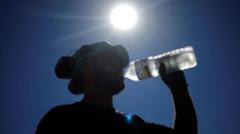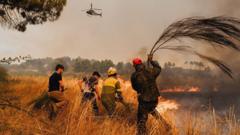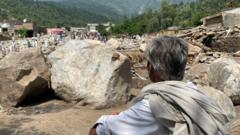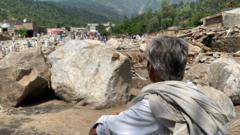The American Southwest is grappling with a persistent megadrought that has been draining water supplies, damaging agriculture, and exacerbating wildfires for nearly 25 years. An alarming new study published in Nature Geoscience warns that this dry spell may not just be a temporary situation but could extend into the coming decades, potentially lasting until 2050, 2100, or beyond, largely driven by climate change.
Victoria Todd, a doctoral student in paleoclimatology at the University of Texas at Austin, led the research, concluding that the current drought conditions are not mere coincidences but are the result of stable Pacific Ocean temperature patterns influenced by global warming. Such prolonged dry conditions could impose significant strain on a rapidly growing region where water-intensive industries, including agriculture and computer-chip manufacturing, rely heavily on readily available water.
To better understand how these climatic patterns develop, Todd and her colleagues examined sediments from two lakes situated in the Rocky Mountains—Stewart Bog and Hunters Lake. The analysis of vegetation remnants preserved in these sediments allowed them to reconstruct rainfall and snowfall patterns over several millennia. Their findings revealed a remarkably drier period in the Southwest that occurred in concert with major warming periods on Earth.
During this pivotal time, warm fragments of the planet’s climate caused disruptions in traditional weather patterns, leading to the emergence of what researchers refer to as a "warm blob" in the Pacific Ocean. This unique ocean temperature pattern rerouted critical wind currents, deflecting moisture-laden storms away from the Southwest and contributing to prolonged drought conditions.
Interestingly, simulations suggested that similar climatic phenomena may currently be at play due to human activity, predominantly greenhouse gas emissions from fossil fuel consumption. Dr. A. Park Williams from UCLA confirmed the study's rigorous approach, but he cautions that existing models may underestimate the drying potential of the current warm blob, suggesting an increased risk of future drought.
Furthermore, experts indicate that human-induced warming is manifesting in various regions worldwide, creating conditions conducive to prolonged droughts. Higher temperatures tend to evaporate moisture from soil and vegetation and result in less snow accumulation during winter, complicating water availability for communities in the Southwest.
Trends revealed by the ongoing megadrought suggest that anthropogenic climate changes might now overshadow traditional natural climate cycles, raising alarm. For instance, during the latest El Niño event, which historically brings wetter conditions to the Southwest, the expected precipitation did not materialize, indicating that established climate patterns might be changing.
In summary, the possible long-term continuation of the megadrought reflects a significant transformation in climate dynamics, emphasizing the critical need for local and global communities to adapt to increasingly unpredictable weather patterns.




















